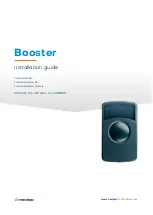
WAGO I/O System 750
Commissioning 115
750-8210/040-000 PFC200; G2; 4ETH; XTR
Manual
Version 1.7.0, valid from FW Version 04.01.10(23)
8.5
Changing Passwords
Change standard passwords
The standard passwords are documented in these instructions and therefore do
not offer adequate protection! Change the passwords to meet your particular
needs!
To increase security all passwords should contain a combination of lower case
letters (a … z), upper case letters (A … Z), numbers (0 … 9), spaces and special
characters: (]!"#$%&'()*+,./:;<=>?@[\^_`{|}~-). Passwords should not contain
generally known names, dates of birth and other information that is easy to
guess.
Change the standard passwords before commissioning the controller.
Standard passwords are issued for the user groups “WBM Users” and “Linux
®
Users.”
The table in the Section “Function Description” > ... > “Users and Passwords” >
“WBM Users Group” shows the standard passwords for the WBM users. Proceed
as follows to change these passwords:
1.
Connect the controller to a PC via one of the network interfaces (X1, X2).
2.
Start a web browser program on the PC and call up the WBM of the
controller
(see Section “Commissioning” > … > “Configuration via Web-
Based-Management (WBM)
”).
3.
Log in on the controller as “admin” user with the standard password.
4.
Change the password for all users on the WBM “Configuration of the users
for the WBM” page.
5.
Select each user and enter a new password and confirm it.
The table in the Section “Functional Description” > ... > “Users and Passwords” >
“Linux
®
Users Group” shows the standard passwords for the Linux
®
users.
Proceed as follows to change these passwords:
1.
Connect the controller to a PC via the network interfaces X1.
2.
Start a terminal program on the PC
(see Section “Commissioning” > … >
“Configuration via Console-Based-Management-Tool (CBM) using a
Terminal Program
”).
3.
Log in on the controller as user “root” with the standard password.
4.
Change the password for
all users with the “passwd root,” “passwd admin”
and “passwd user” commands.
















































